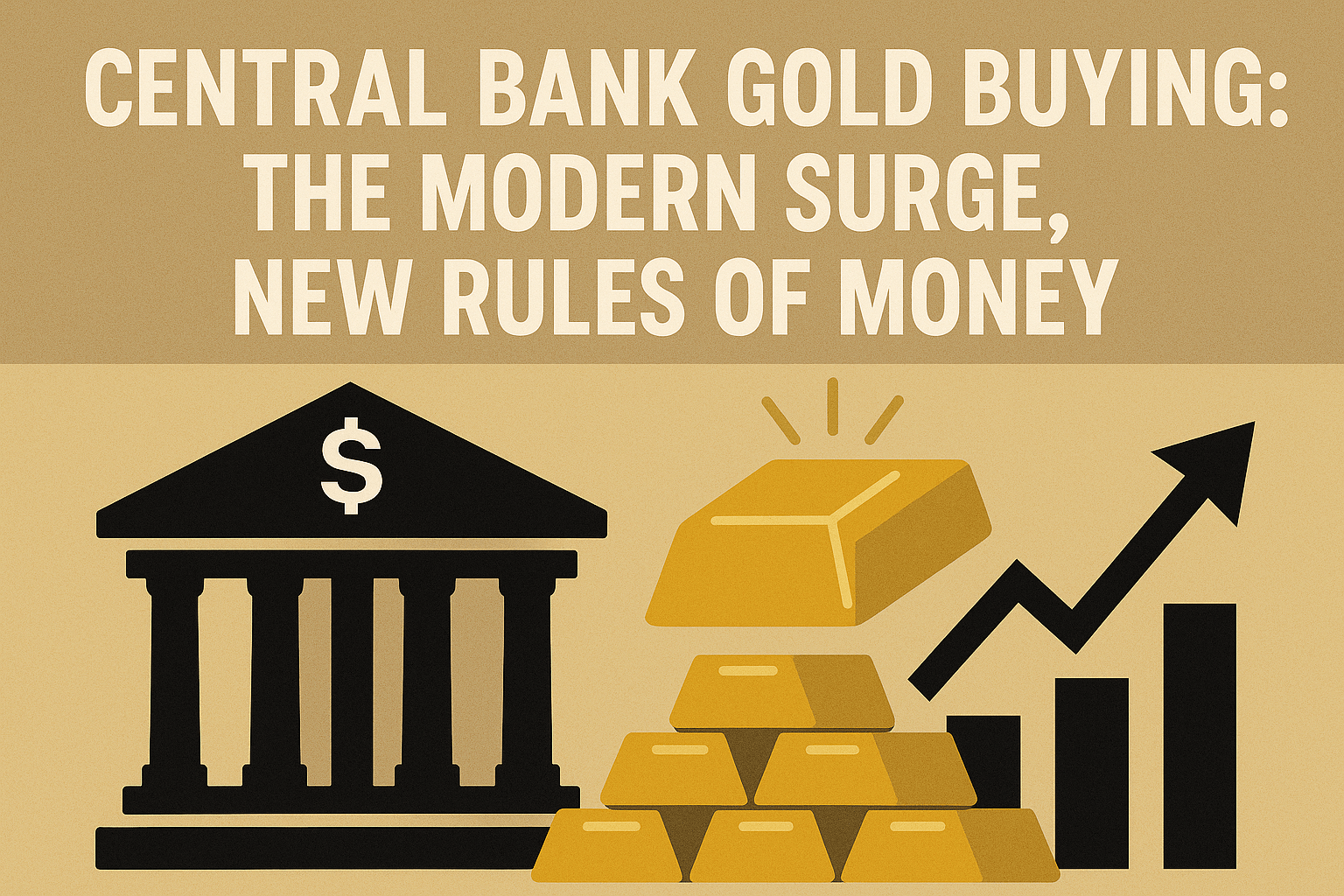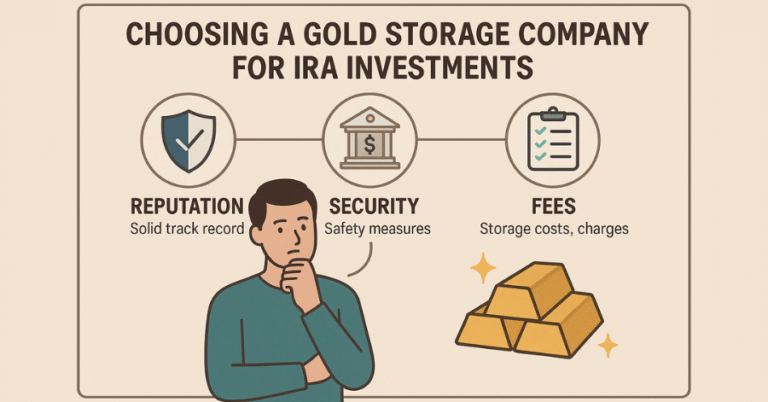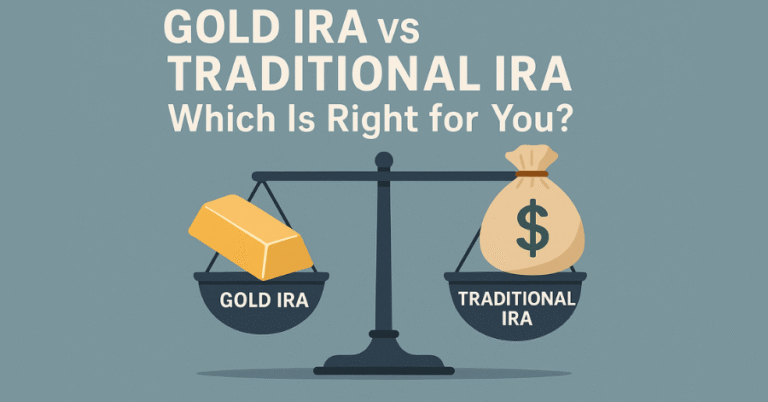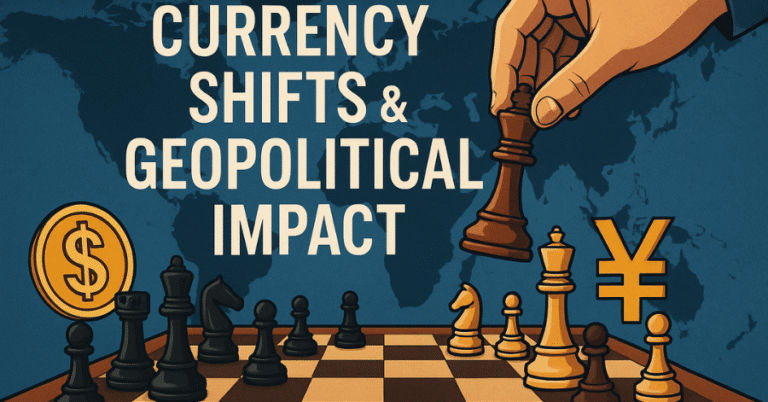Key Takeaway
A surge in gold buying by central banks marks a major shift in the global financial system.
This is a deliberate, long-term strategy to:
- Hedge against geopolitical risk.
- Reduce dependence on the U.S. dollar.
- Protect national wealth from inflation.
The trend confirms gold’s re-emerging role as a primary, neutral store of value.
It signals that individual investors should consider physical gold to safeguard their own wealth.
Introduction to Central Bank Gold Buying
Why are the world’s most powerful financial institutions, the central banks, quietly executing the biggest gold buy-up in over half a century? As we navigate 2025, these historically conservative bodies are ditching traditional assets and embracing gold at a pace that suggests a fundamental shift in the global financial order. This isn’t a fleeting trend; it’s a calculated pivot with profound implications for governments, markets, and your personal wealth. The central question is no longer if gold is relevant, but rather, will this surge in central bank gold buying redefine global power, or is it a sign of a system bracing for impact?
This article breaks down the modern surge in central bank gold buying, why it’s happening now, and what it means for your financial strategy.
Drivers of Central Bank Gold Buying
The surge in central bank gold buying isn’t random; it’s a coordinated response to a new era of economic and geopolitical instability. Three key drivers form the blueprint for this global pivot.
The Geopolitical Hedge in an Unstable World
The primary driver is a search for safety. With rising geopolitical tensions and the weaponization of currencies, nations are increasingly seeking a neutral, sanction-proof asset. As one senior monetary policy advisor noted, “We’re witnessing the reemergence of gold as a strategic national asset rather than merely a portfolio diversifier.”
The World Gold Council’s 2025 Central Bank Gold Reserves Survey confirms this, with a record 43% of central bankers stating they will increase their own gold reserves in the next 12 months, citing geopolitical risk as a major factor.
The Strategic Push Away From the Dollar
For decades, the U.S. dollar has been the world’s undisputed reserve currency. That dominance is now being actively challenged. Nations, particularly emerging market powerhouses, are systematically reducing their reliance on the dollar—a strategy known as de-dollarization. Gold is their primary alternative.
According to the same World Gold Council survey, 73% of central banks expect the U.S. dollar’s share of total reserves to fall over the next five years. This isn’t just talk; countries like China, Poland, and India have been leading the charge in net gold purchases for several years.
An Age-Old Defense Against Modern Economic Woes
Persistent inflation and soaring government debt have eroded the value of fiat currencies. Central banks are turning to gold as a reliable store of value and an inflation hedge. Unlike paper money, which can be printed indefinitely, gold’s supply is finite. This intrinsic value provides a backstop against currency debasement.
An underrated technical hurdle in this rush is the logistics and security of moving and storing vast quantities of gold. Repatriating gold from foreign vaults, like those in New York and London, to home countries is a complex and costly endeavor, yet it’s a step many nations are taking to ensure full sovereignty over their assets.
Why Traditional Reserves Are Vulnerable
The current system, heavily reliant on U.S. Treasury bonds and other dollar-denominated assets, has shown significant vulnerabilities that the trend of central bank gold buying exploits.
The policy of using financial sanctions has demonstrated that reserve assets held abroad can be frozen or seized, turning a nation’s wealth into a political liability overnight. This has led countries to question the safety of holding the bulk of their reserves in any single foreign currency. The move toward gold is a direct challenge to this status quo, with regional alliances like the BRICS nations reportedly coordinating gold purchases to build an alternative financial architecture.
The Golden Dilemma: Internal Contradictions in the Rush
Despite the clear trend, the global move toward gold is not without its internal contradictions. The very act of central bank gold buying on a massive scale pushes prices higher, making it more expensive for other nations to follow suit. This creates a potential divide between the early movers and the latecomers.
This situation has historical parallels. Like the scramble for colonies in the 19th century, the current rush for gold could exacerbate geopolitical rivalries between nations seeking to secure their financial futures. The finite supply of easily accessible gold means that this trend cannot continue at its current pace indefinitely without causing significant market dislocations.
The Rise of Parallel Systems: Alternatives to the Mainstream
As central banks build their gold reserves, a parallel movement is occurring among individual investors. Recognizing the same risks that are spooking governments, savvy investors are increasingly seeking their own forms of financial security outside the traditional banking system.
One of the most direct ways is through the acquisition of physical assets, such as buying gold bullion and coins. This allows individuals to hold a tangible asset with no counterparty risk, mirroring the strategy of central banks on a personal scale. Another growing alternative is the Gold IRA, which allows investors to hold physical gold within a tax-advantaged retirement account, offering both the security of gold and the benefits of an IRA.
Forecasts & Actionable Insights for the Prudent Investor
The smart money is moving, and credible institutions are taking note.
- Goldman Sachs has reiterated its bullish forecast, predicting gold could reach $3,700 per ounce by the end of 2025, citing “rising global risks.”
- HSBC raised its 2025 average gold price forecast, attributing it to “elevated risks and government debt.”
- A J.P. Morgan report highlights that while volatile, “in a world of heightened uncertainty, owning some gold makes sense” as a portfolio diversifier.
A counterargument suggests that as interest rates eventually fall, the appeal of non-yielding gold might diminish. However, the structural shifts driving central bank gold buying—geopolitical risk and de-dollarization—are long-term trends that are unlikely to reverse quickly.
For the individual investor, the message from central banks is clear: traditional financial assets carry risks that require diversification. A prudent recommendation would be to consider allocating a portion of your portfolio—many experts suggest 5-10%—to physical gold.
Frequently Asked Questions (FAQ)
1. What is driving the current surge in central bank gold buying?
Central banks are buying gold at a record pace due to a combination of three main factors:
- Geopolitical Hedging: In a world with rising international tensions and the use of currencies as economic weapons, gold is seen as a neutral, sanction-proof asset that provides financial security.
- De-Dollarization: Many nations, particularly emerging economies, are actively reducing their reliance on the U.S. dollar as the primary reserve currency. Gold is the leading alternative for diversifying their national reserves.
- Economic Instability: Persistent inflation and high levels of government debt are eroding the value of fiat currencies. Central banks are using gold, with its finite supply, as a reliable store of value and a long-term hedge against inflation.
2. Why are central banks moving away from the U.S. dollar?
The U.S. dollar’s dominance is being challenged for several reasons. The use of financial sanctions has shown that dollar-denominated assets held abroad can be frozen, making them a political liability. According to a World Gold Council survey, a significant majority (73%) of central banks anticipate the dollar’s share of global reserves to decline as they seek to reduce their vulnerability and increase their financial sovereignty.
3. What are the implications of this trend for the global economy?
The large-scale buying of gold by central banks is accelerating a shift toward a multi-polar global financial system. This trend could lead to increased competition and potential rivalries between nations as they scramble to secure a finite asset. It also challenges the long-standing dominance of the U.S. dollar and could lead to significant dislocations in global markets as the financial order continues to fragment.
4. What do financial experts predict for the price of gold?
Leading financial institutions have a bullish outlook on gold, driven by the same factors influencing central banks. Goldman Sachs has forecasted that gold could reach $3,700 per ounce by the end of 2025. Similarly, HSBC and J.P. Morgan have highlighted gold’s role as a crucial portfolio diversifier in a climate of heightened global uncertainty and risk.
5. How can an individual investor respond to this trend?
The actions of central banks provide a clear message for individual investors: traditional financial assets carry significant risks that necessitate diversification. Financial experts often recommend allocating a portion of a portfolio, typically 5-10%, to physical gold. This can be achieved through the direct purchase of gold bullion and coins or through a Gold IRA, which allows for holding physical gold within a tax-advantaged retirement account. This strategy mirrors that of central banks by providing a tangible, safe-haven asset independent of the traditional banking system.
Conclusion: Adapting to a Fragmenting Financial World
The surge in central bank gold buying isn’t just about a shiny metal; it’s a vote of no confidence in the current financial system. This trend won’t necessarily cause a sudden collapse, but it will accelerate the fragmentation of the global economic order. The world is moving toward a multi-polar system where gold plays a pivotal role as a neutral and trusted asset.
For individuals, adapting means recognizing this shift and taking proactive steps to protect their wealth. The same reasons driving governments to gold—the need for a safe haven, an inflation hedge, and a store of value independent of any single currency—are just as relevant for your own savings.
To learn how you can mirror the strategy of the world’s central banks and protect your future with physical gold, consider a trusted partner like Birch Gold Group.







